Abstract
WIN 49375 (amifloxacin) is a synthetic antibacterial agent of the quinolone class. It is similar in chemical structure to pefloxacin but differs by containing a methylamino, rather than an ethyl, substituent at the 1-N position. The activity of WIN 49375 in vitro was comparable to those of norfloxacin and pefloxacin against Enterobacteriaceae and generally greater than those of tobramycin and cefotaxime. WIN 49375 was more active in vitro than carbenicillin and mezlocillin against Pseudomonas aeruginosa isolates and showed moderate activity against Staphylococcus aureus, with MICs of less than or equal to 2 micrograms/ml. The in vitro activity of WIN 49375 was not markedly affected by the presence of human serum, the size of the bacterial inoculum, or changes in pH between 6 and 8. Against systemic, gram-negative bacterial infections in mice, WIN 49375 was generally less active than cefotaxime but more active than gentamicin. WIN 49548, the major piperazinyl-N-desmethyl metabolite of WIN 49375, was aa effective as the parent drug against experimental infections in mice when given parenterally. When administered orally, however, this metabolite was less potent than WIN 49375. WIN 49375 was highly active by the oral route, with 50% effective doses within two- to threefold of those obtained with parenteral medication.
Full text
PDF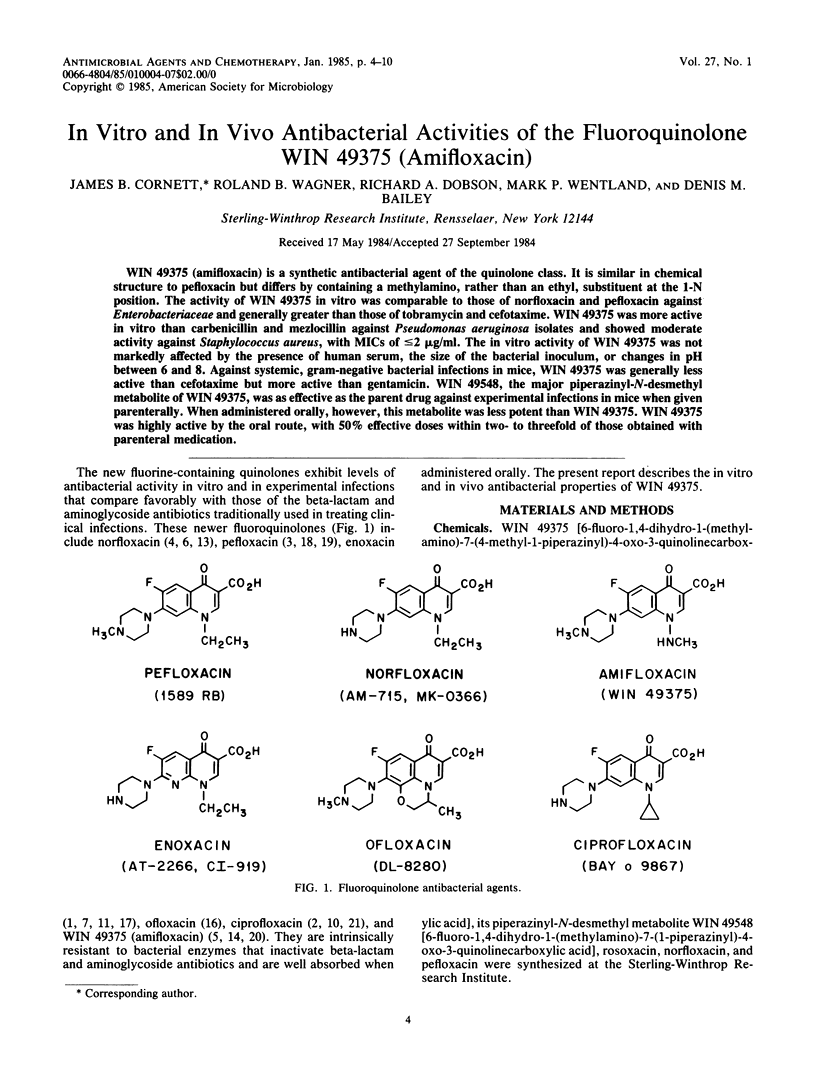
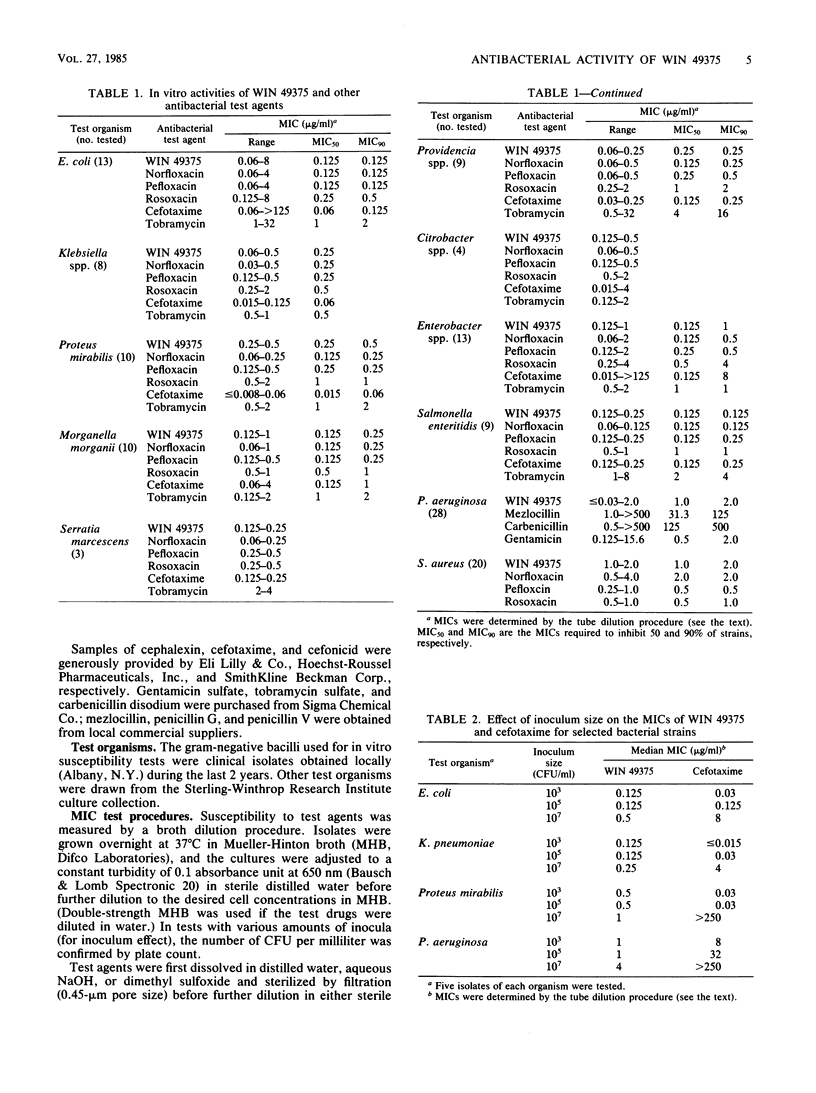
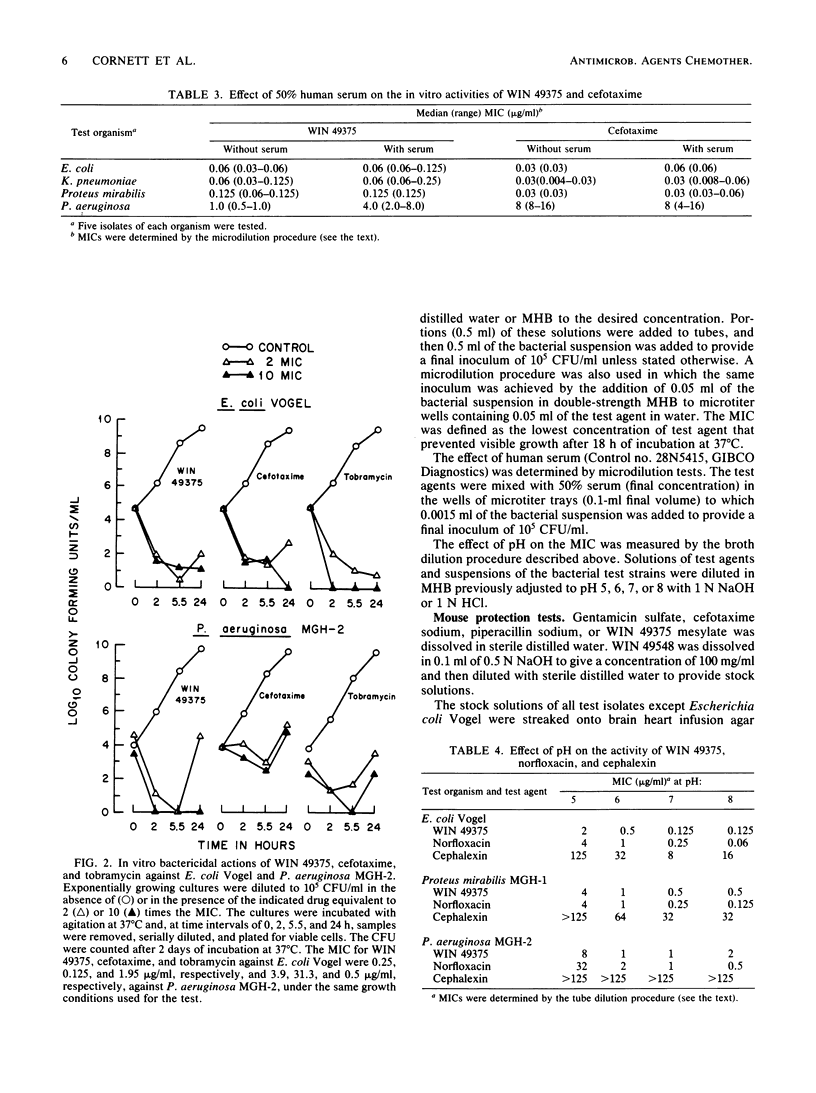
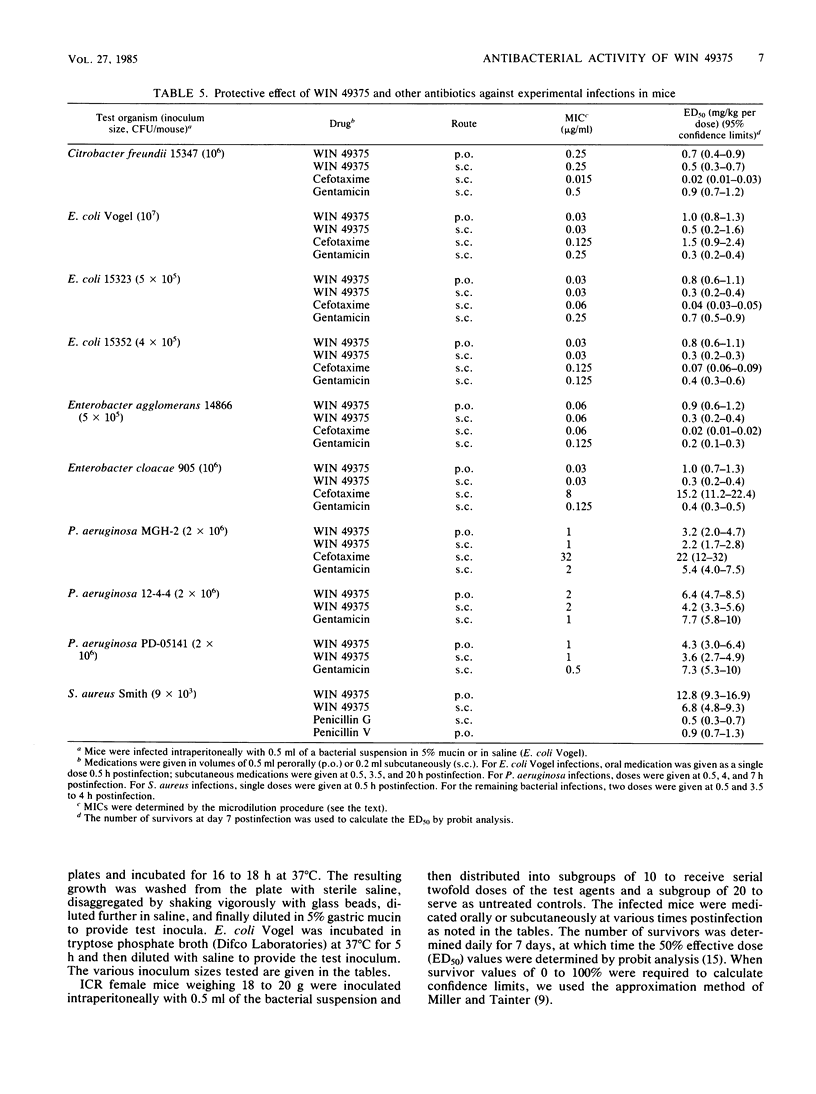
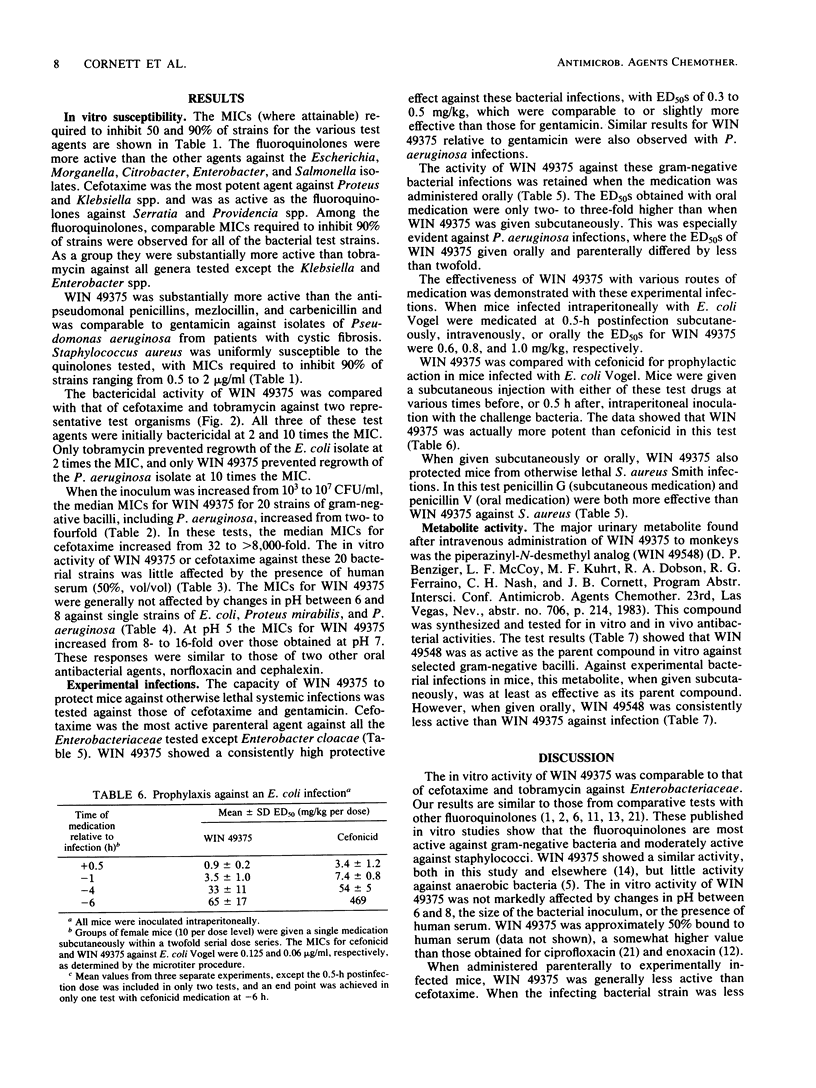
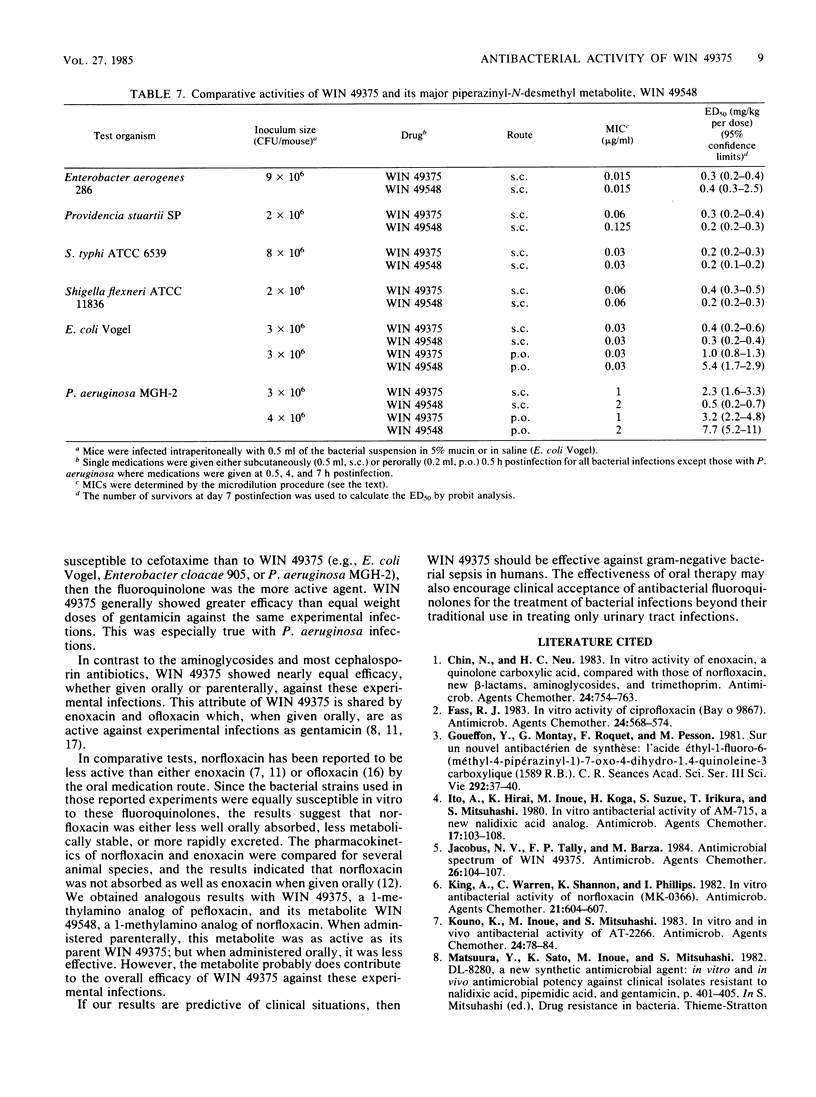
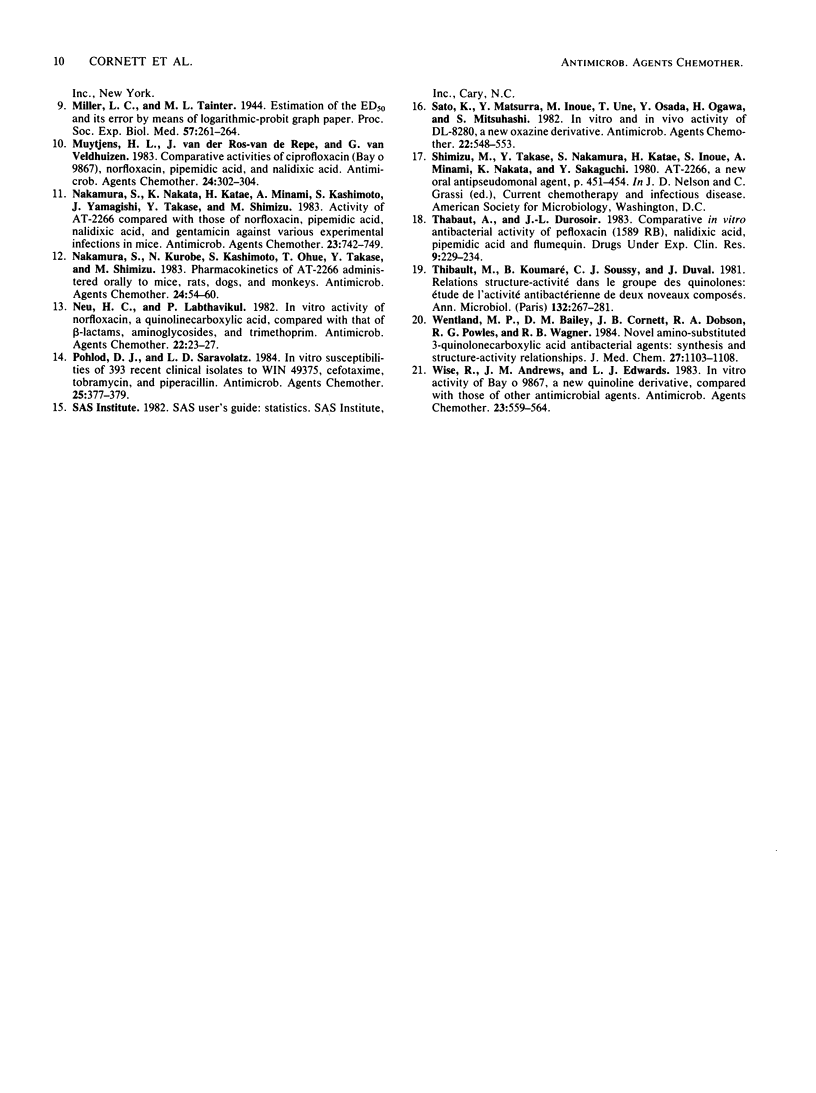
Selected References
These references are in PubMed. This may not be the complete list of references from this article.
- Chin N. X., Neu H. C. In vitro activity of enoxacin, a quinolone carboxylic acid, compared with those of norfloxacin, new beta-lactams, aminoglycosides, and trimethoprim. Antimicrob Agents Chemother. 1983 Nov;24(5):754–763. doi: 10.1128/aac.24.5.754. [DOI] [PMC free article] [PubMed] [Google Scholar]
- Fass R. J. In vitro activity of ciprofloxacin (Bay o 9867). Antimicrob Agents Chemother. 1983 Oct;24(4):568–574. doi: 10.1128/aac.24.4.568. [DOI] [PMC free article] [PubMed] [Google Scholar]
- Goueffon Y., Montay G., Roquet F., Pesson M. Sur un nouvel antibactérien de synthèse : l'acide éthyl-1 fluoro-6 (méthyl-4 pipérazinyl-1)-7 oxo-4 dihydro-1.4 quinoléine-3 carboxylique (1589 R.B.). C R Seances Acad Sci III. 1981 Jan 5;292(1):37–40. [PubMed] [Google Scholar]
- Ito A., Hirai K., Inoue M., Koga H., Suzue S., Irikura T., Mitsuhashi S. In vitro antibacterial activity of AM-715, a new nalidixic acid analog. Antimicrob Agents Chemother. 1980 Feb;17(2):103–108. doi: 10.1128/aac.17.2.103. [DOI] [PMC free article] [PubMed] [Google Scholar]
- Jacobus N. V., Tally F. P., Barza M. Antimicrobial spectrum of Win 49375. Antimicrob Agents Chemother. 1984 Jul;26(1):104–107. doi: 10.1128/aac.26.1.104. [DOI] [PMC free article] [PubMed] [Google Scholar]
- King A., Warren C., Shannon K., Phillips I. In vitro antibacterial activity of norfloxacin (MK-0366). Antimicrob Agents Chemother. 1982 Apr;21(4):604–607. doi: 10.1128/aac.21.4.604. [DOI] [PMC free article] [PubMed] [Google Scholar]
- Kouno K., Inoue M., Mitsuhashi S. In vitro and in vivo antibacterial activity of AT-2266. Antimicrob Agents Chemother. 1983 Jul;24(1):78–84. doi: 10.1128/aac.24.1.78. [DOI] [PMC free article] [PubMed] [Google Scholar]
- Muytjens H. L., van der Ros-van de Repe J., van Veldhuizen G. Comparative activities of ciprofloxacin (Bay o 9867), norfloxacin, pipemidic acid, and nalidixic acid. Antimicrob Agents Chemother. 1983 Aug;24(2):302–304. doi: 10.1128/aac.24.2.302. [DOI] [PMC free article] [PubMed] [Google Scholar]
- Nakamura S., Kurobe N., Kashimoto S., Ohue T., Takase Y., Shimizu M. Pharmacokinetics of AT-2266 administered orally to mice, rats, dogs, and monkeys. Antimicrob Agents Chemother. 1983 Jul;24(1):54–60. doi: 10.1128/aac.24.1.54. [DOI] [PMC free article] [PubMed] [Google Scholar]
- Nakamura S., Nakata K., Katae H., Minami A., Kashimoto S., Yamagishi J., Takase Y., Shimizu M. Activity of AT-2266 compared with those of norfloxacin, pipemidic acid, nalidixic acid, and gentamicin against various experimental infections in mice. Antimicrob Agents Chemother. 1983 May;23(5):742–749. doi: 10.1128/aac.23.5.742. [DOI] [PMC free article] [PubMed] [Google Scholar]
- Neu H. C., Labthavikul P. In vitro activity of norfloxacin, a quinolinecarboxylic acid, compared with that of beta-lactams, aminoglycosides, and trimethoprim. Antimicrob Agents Chemother. 1982 Jul;22(1):23–27. doi: 10.1128/aac.22.1.23. [DOI] [PMC free article] [PubMed] [Google Scholar]
- Pohlod D. J., Saravolatz L. D. In vitro susceptibilities of 393 recent clinical isolates to WIN 49375, cefotaxime, tobramycin, and piperacillin. Antimicrob Agents Chemother. 1984 Mar;25(3):377–379. doi: 10.1128/aac.25.3.377. [DOI] [PMC free article] [PubMed] [Google Scholar]
- Sato K., Matsuura Y., Inoue M., Une T., Osada Y., Ogawa H., Mitsuhashi S. In vitro and in vivo activity of DL-8280, a new oxazine derivative. Antimicrob Agents Chemother. 1982 Oct;22(4):548–553. doi: 10.1128/aac.22.4.548. [DOI] [PMC free article] [PubMed] [Google Scholar]
- Thibault M., Koumaré B., Soussy C. J., Duval J. Relations structure-activité dans le groupe des quinolones: étude de l'activité antibactérienne de deux nouveaux composés. Ann Microbiol (Paris) 1981 May-Jun;132(3):267–281. [PubMed] [Google Scholar]
- Wentland M. P., Bailey D. M., Cornett J. B., Dobson R. A., Powles R. G., Wagner R. B. Novel amino-substituted 3-quinolinecarboxylic acid antibacterial agents: synthesis and structure-activity relationships. J Med Chem. 1984 Sep;27(9):1103–1108. doi: 10.1021/jm00375a003. [DOI] [PubMed] [Google Scholar]
- Wise R., Andrews J. M., Edwards L. J. In vitro activity of Bay 09867, a new quinoline derivative, compared with those of other antimicrobial agents. Antimicrob Agents Chemother. 1983 Apr;23(4):559–564. doi: 10.1128/aac.23.4.559. [DOI] [PMC free article] [PubMed] [Google Scholar]


